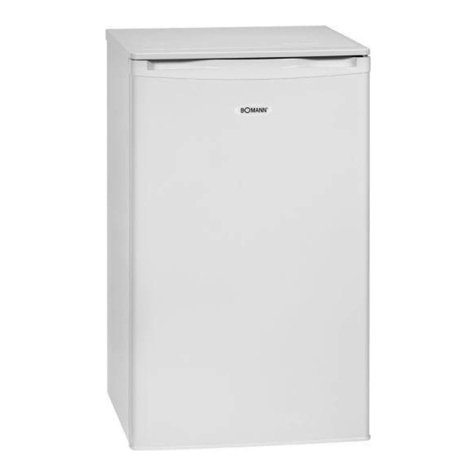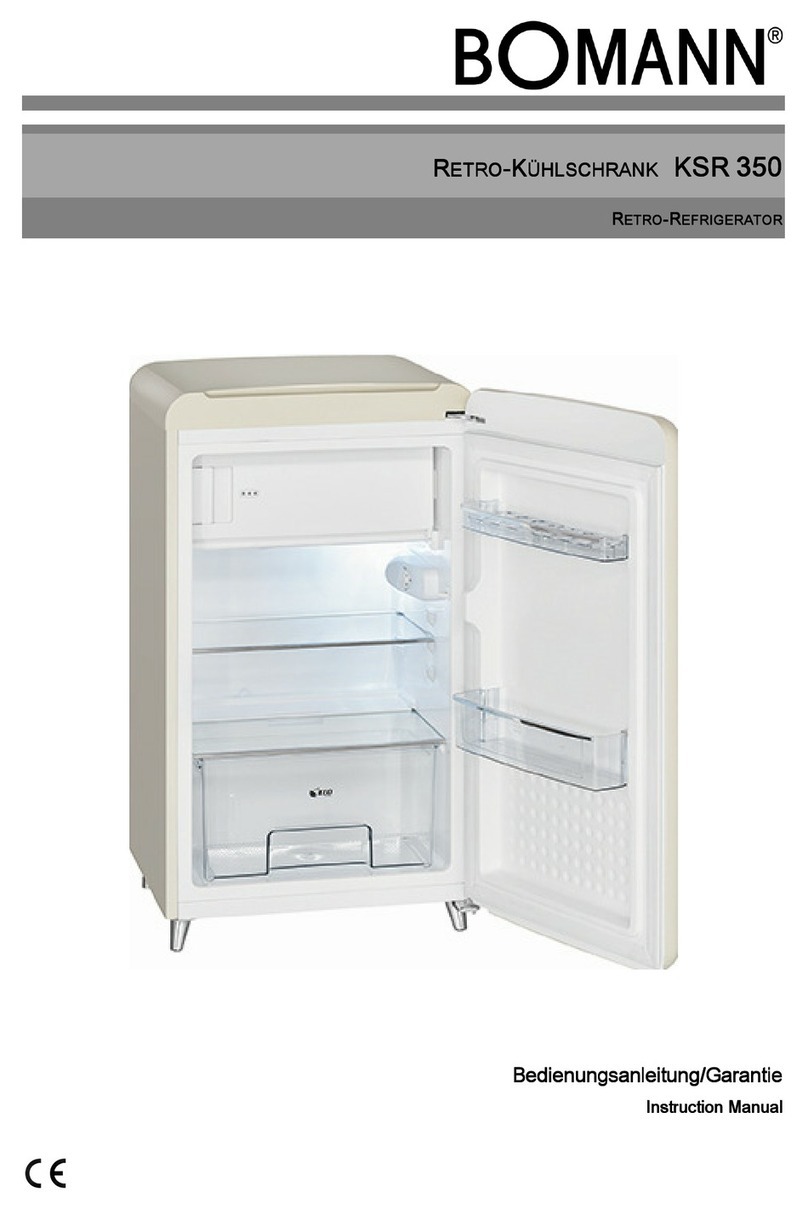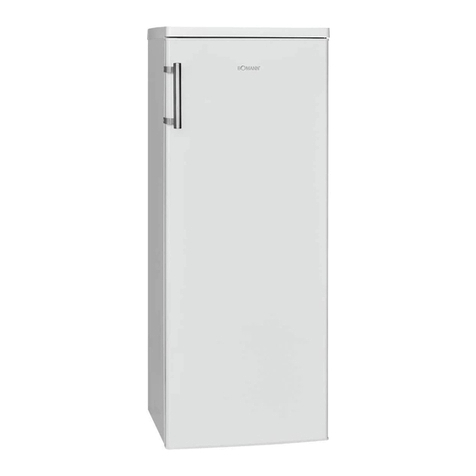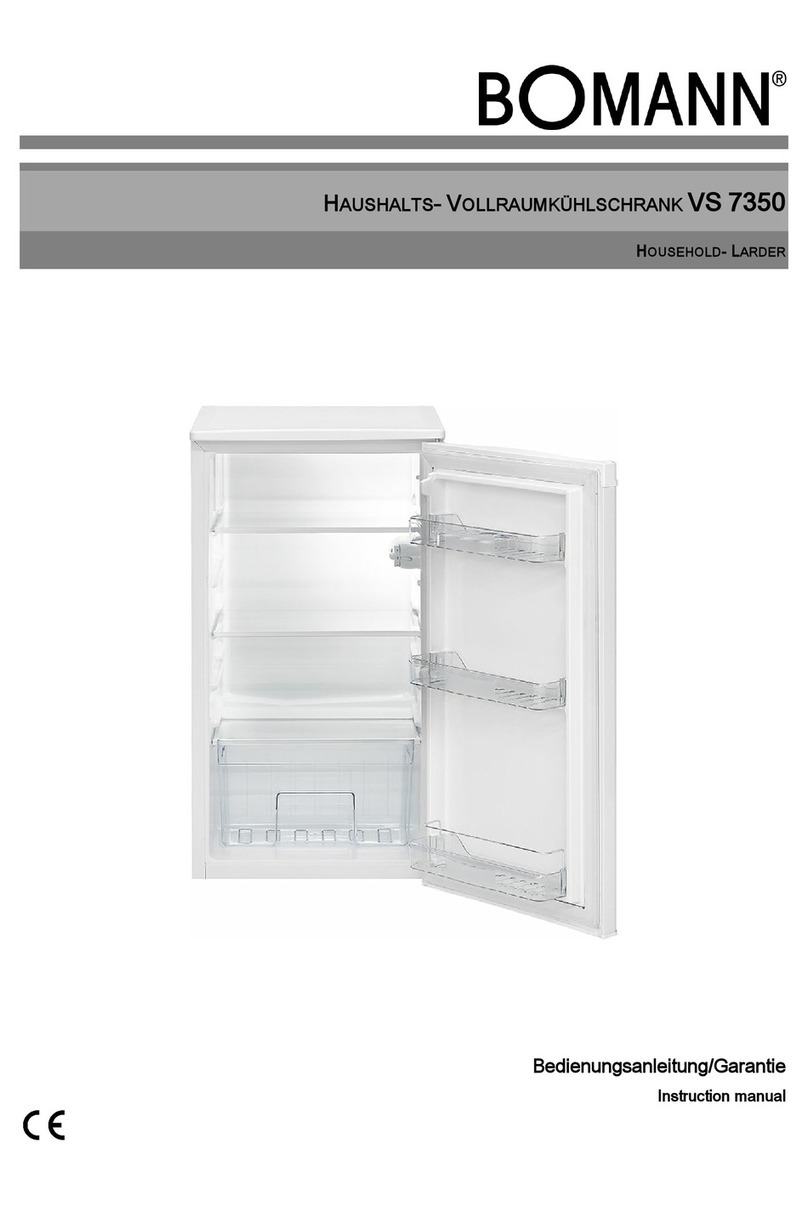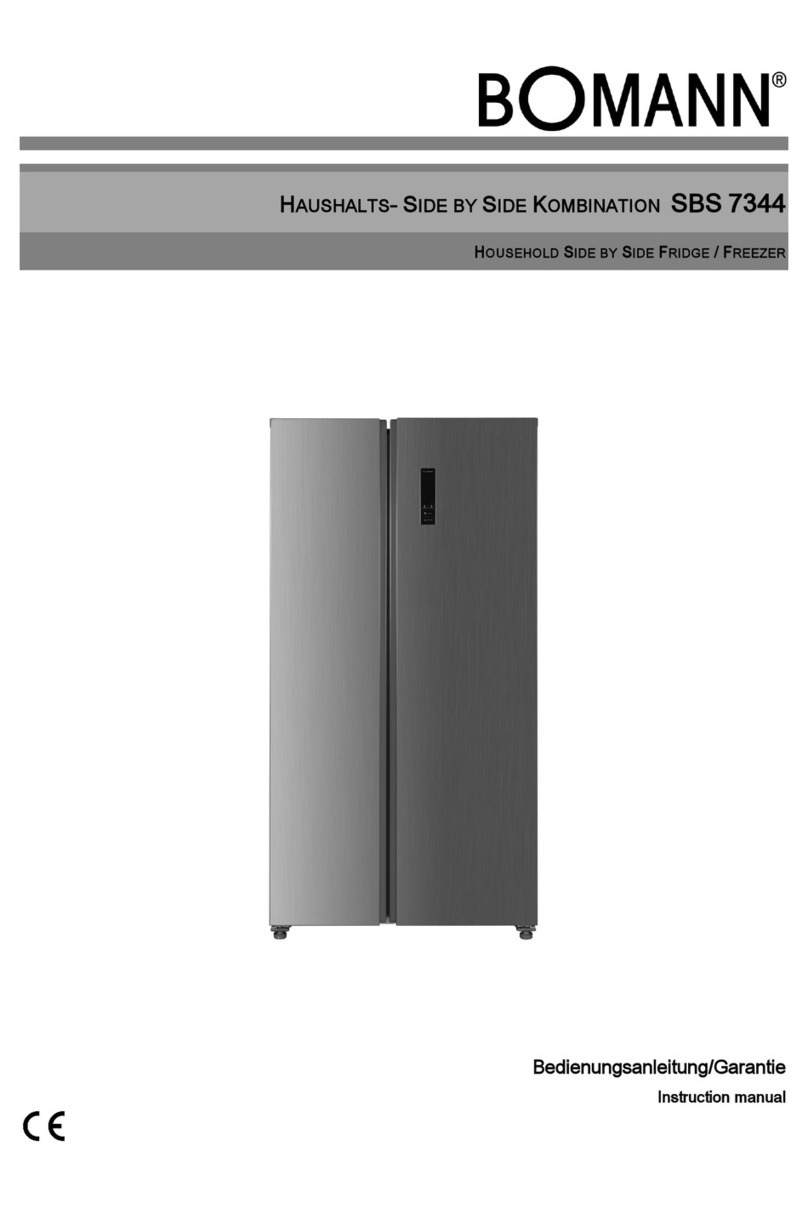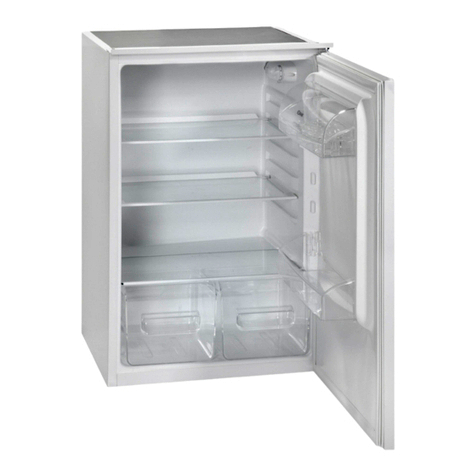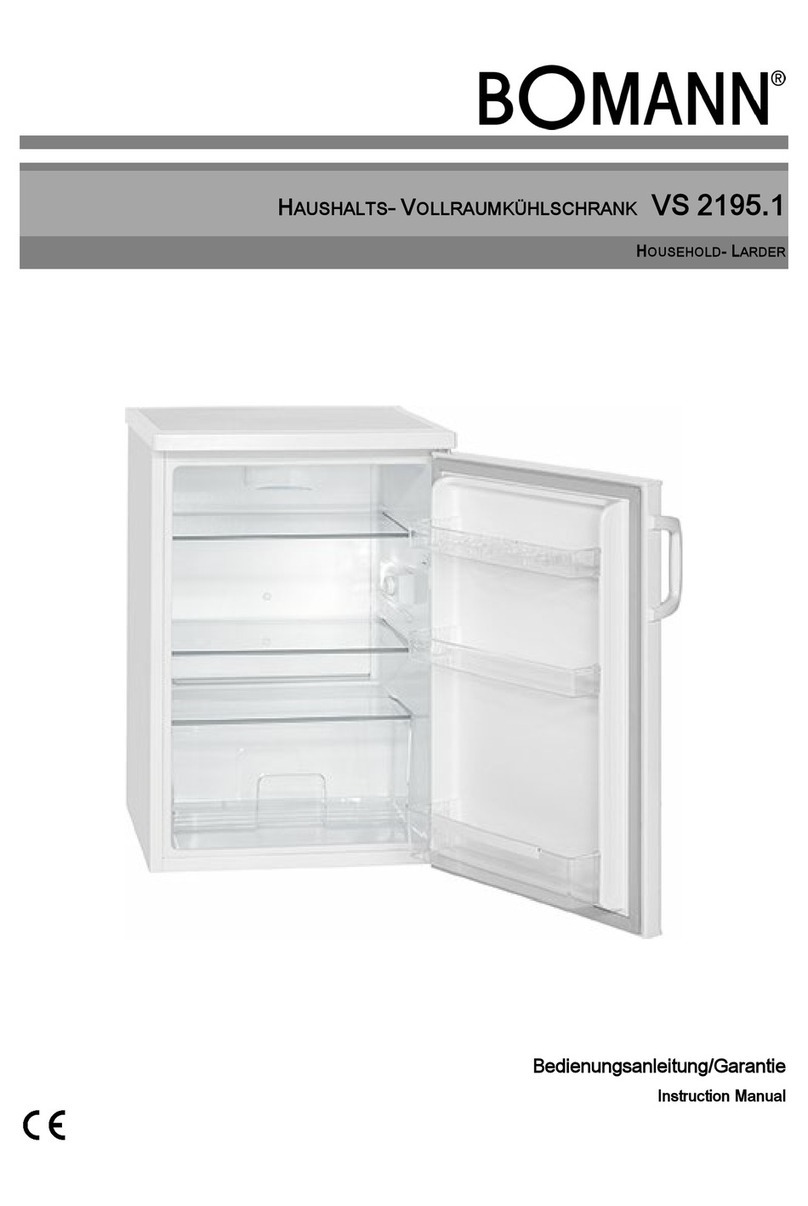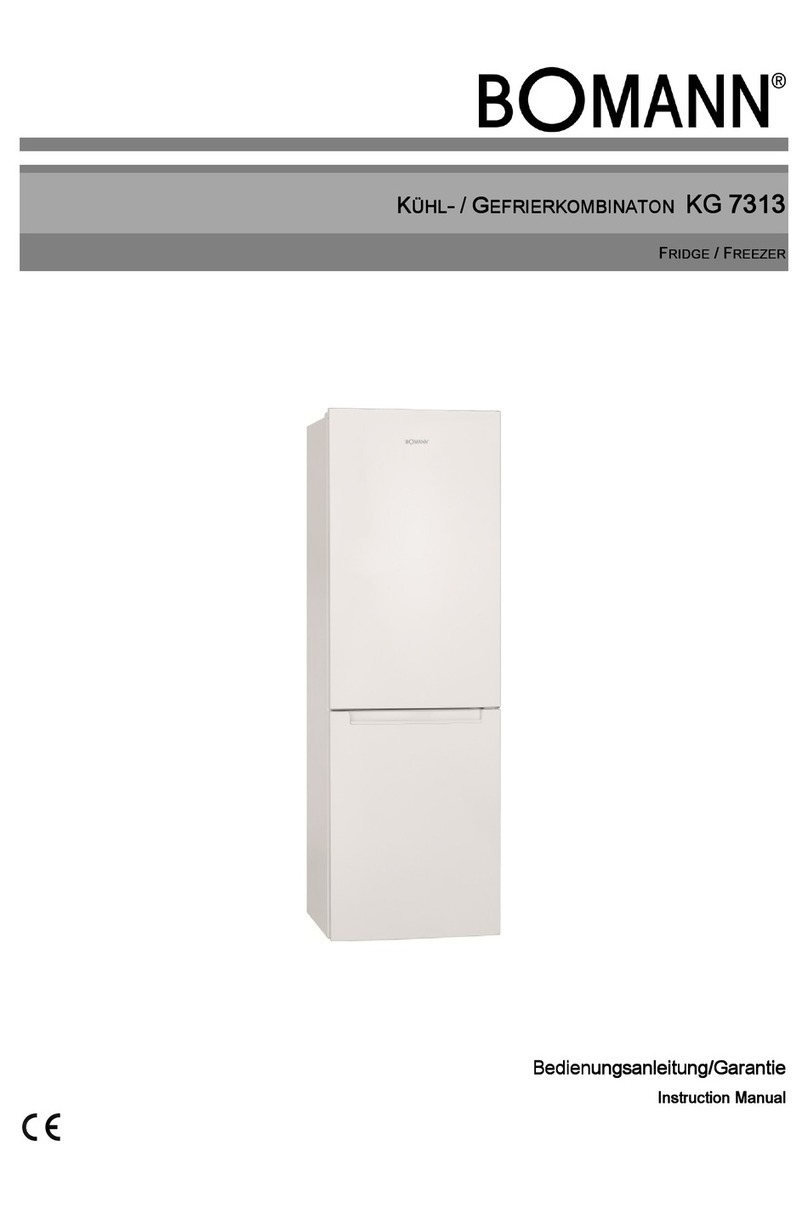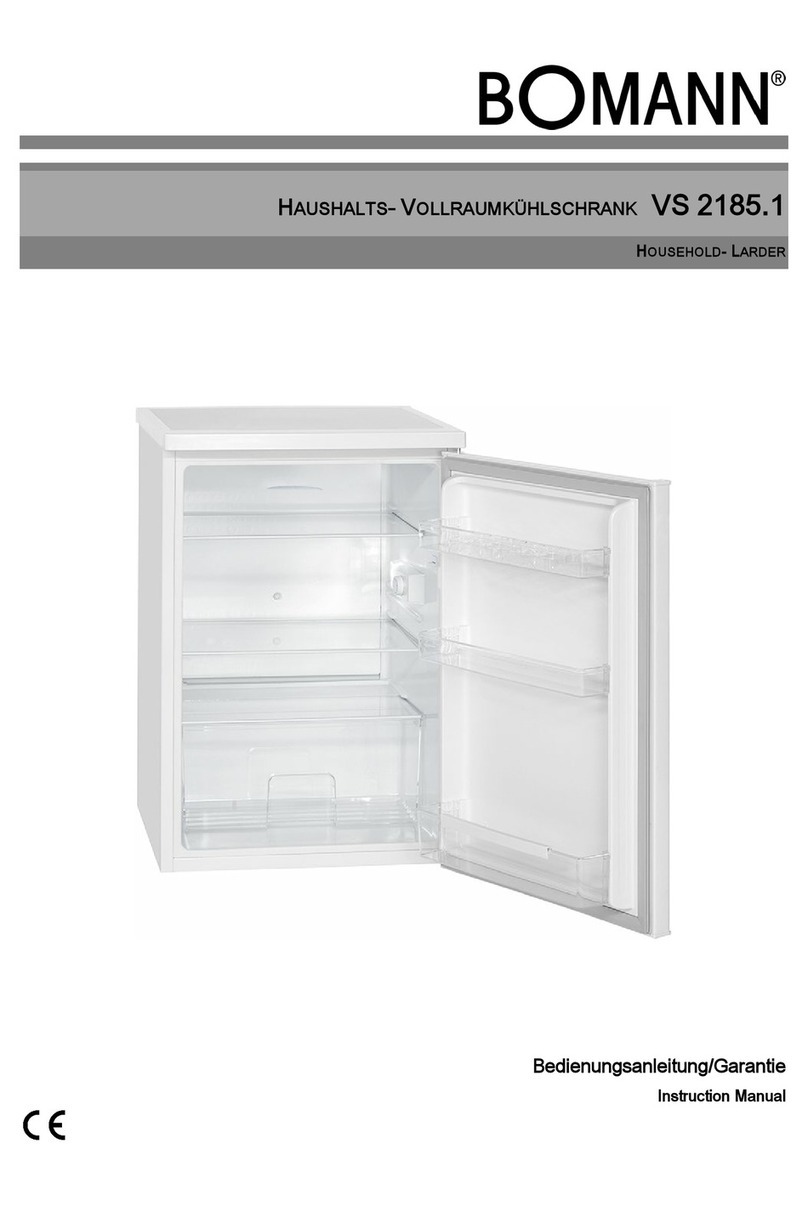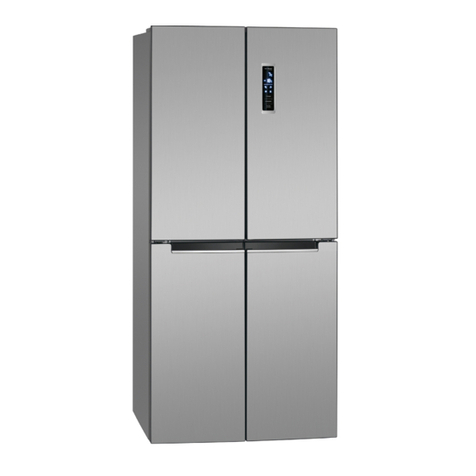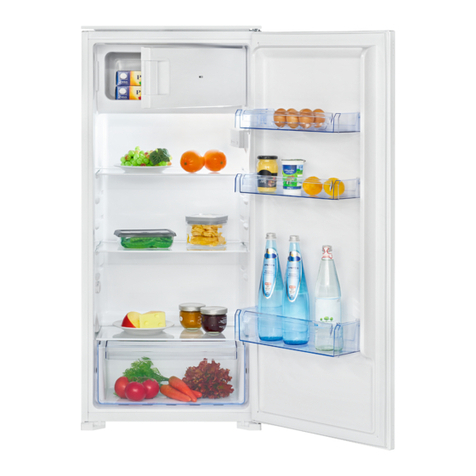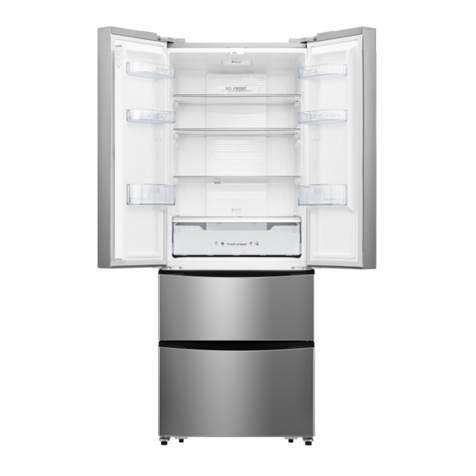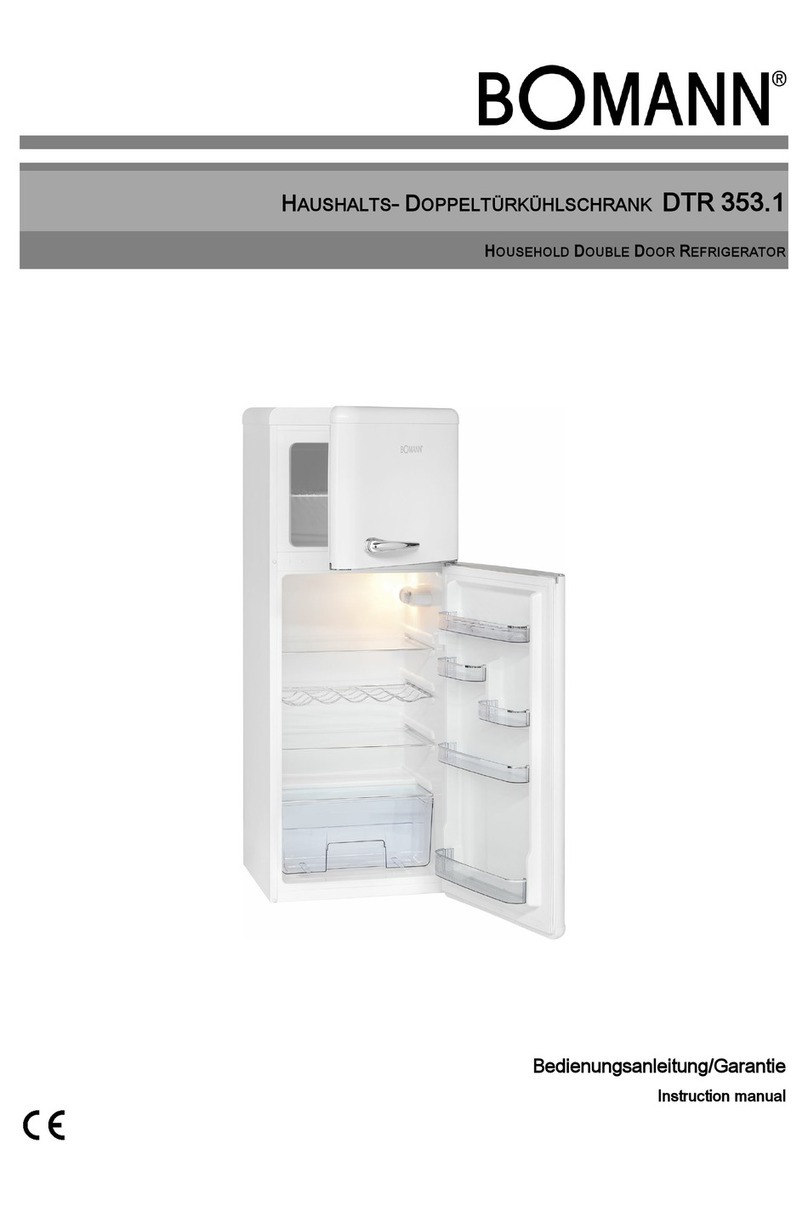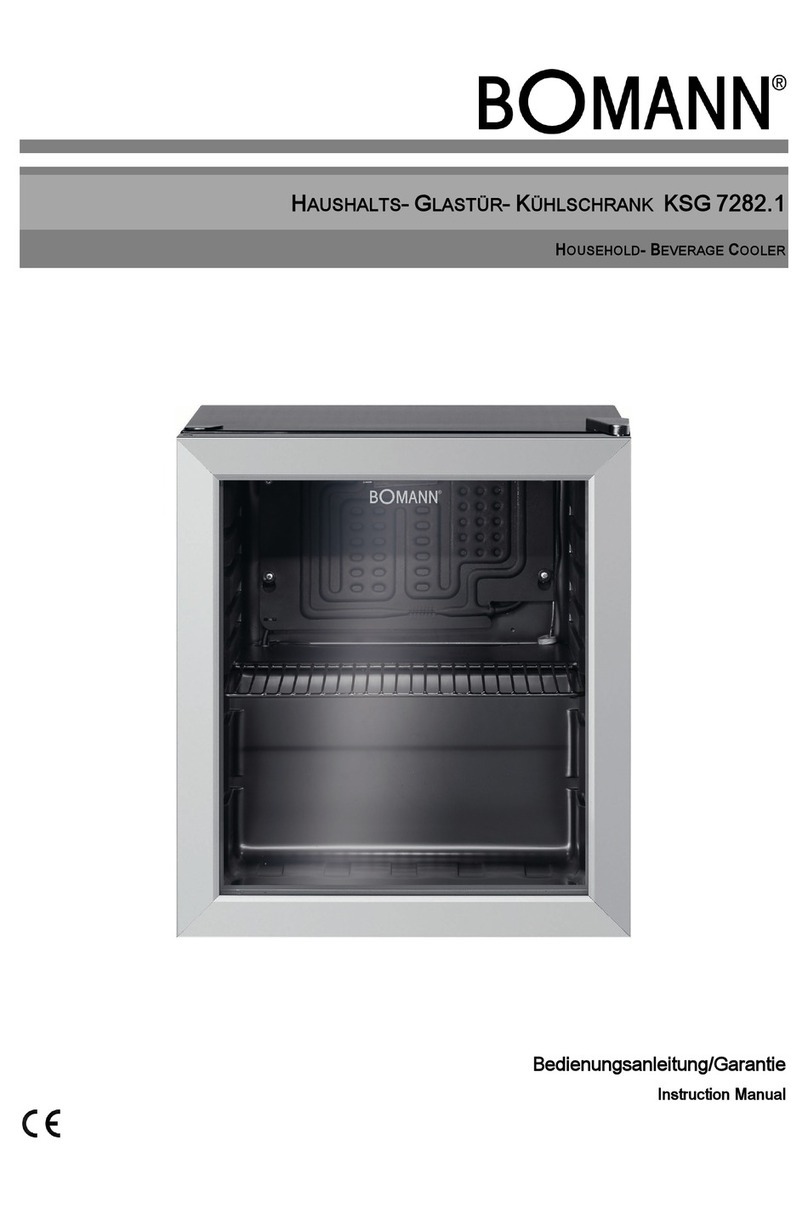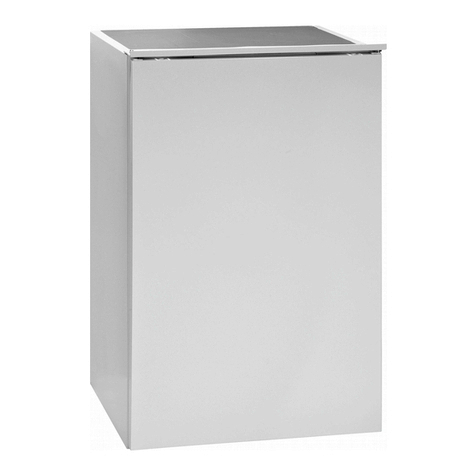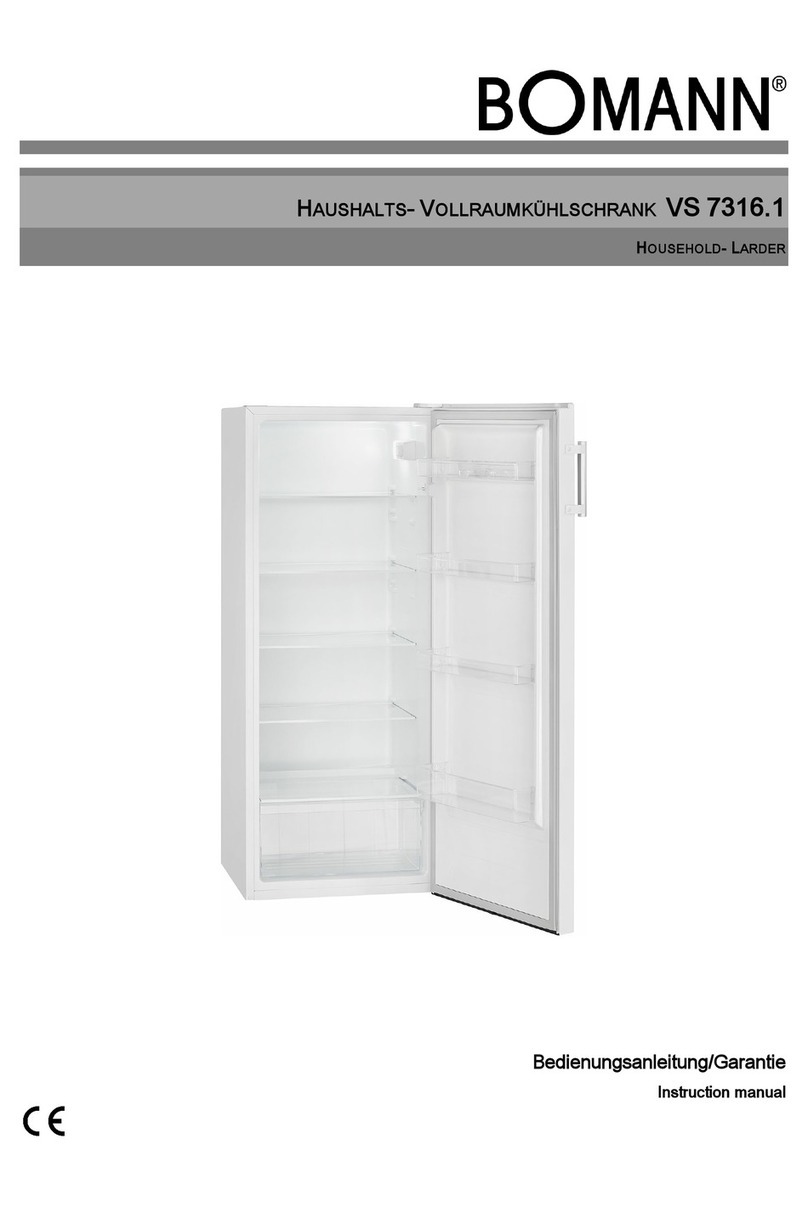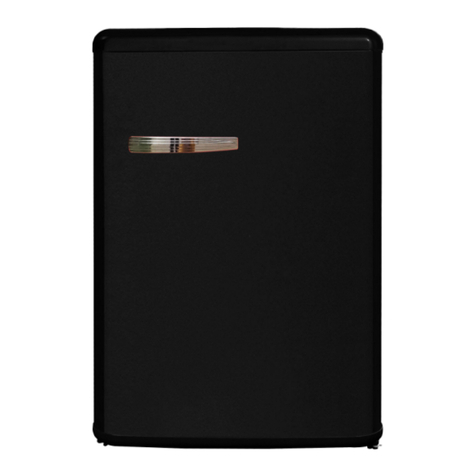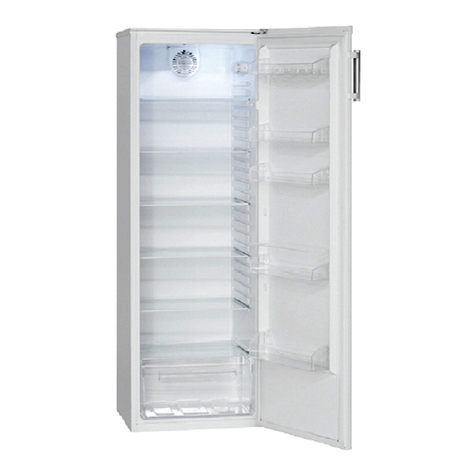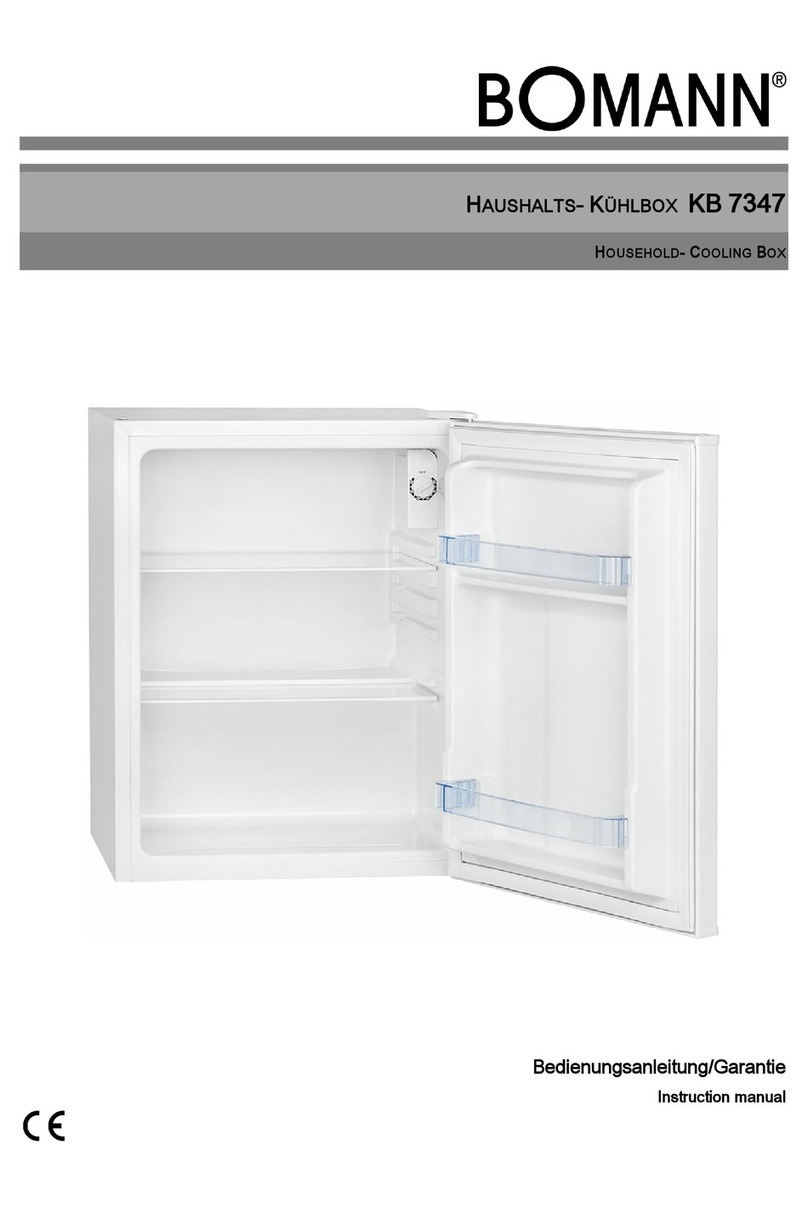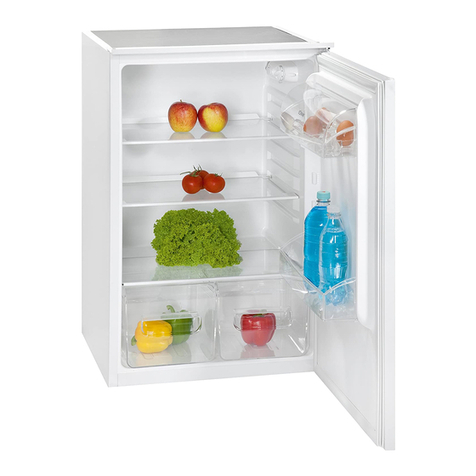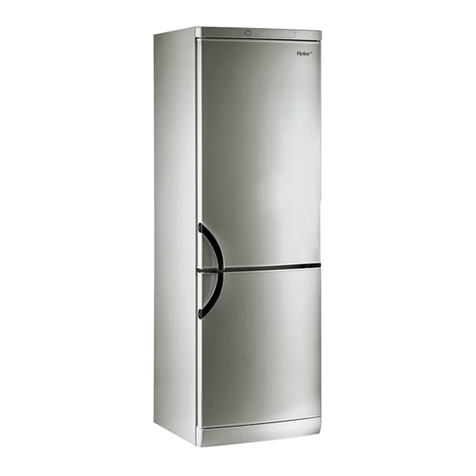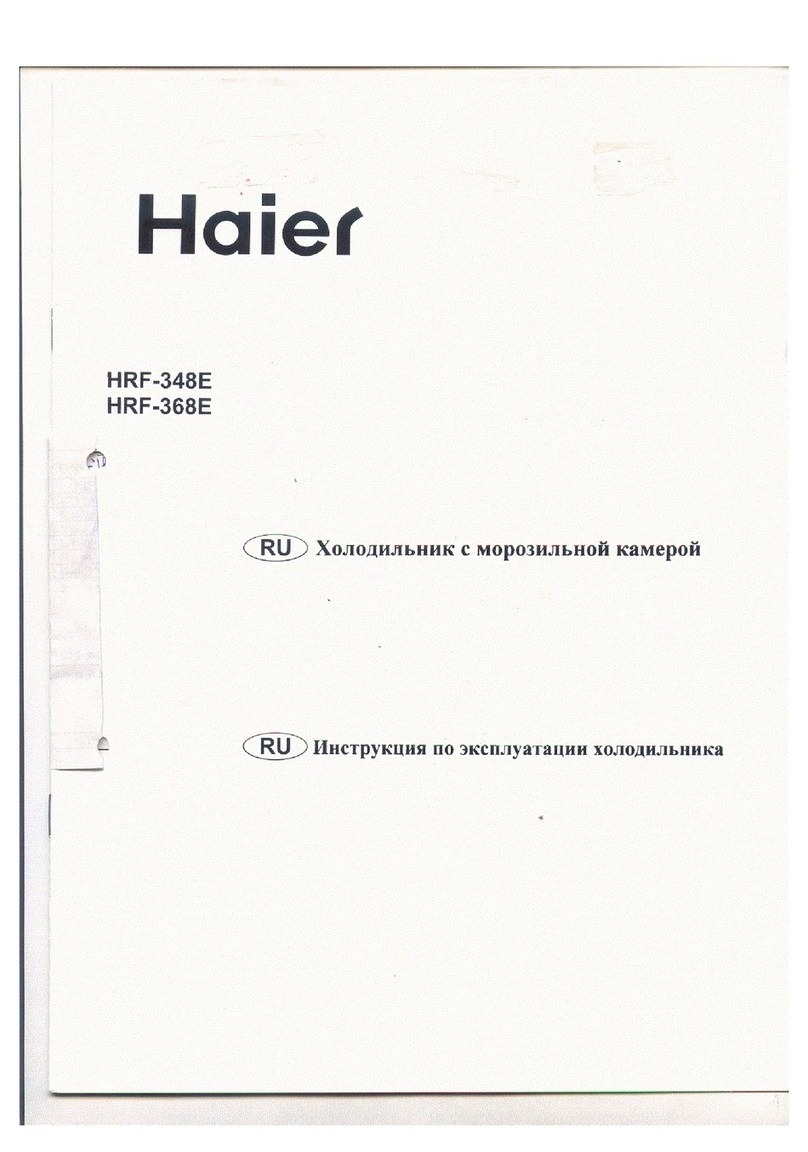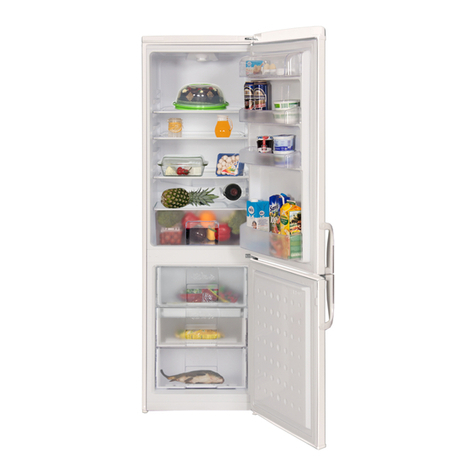
10
11/2013
IMPORTANT: Make sure that the temperature in the freezer does not rise above -18°C.
Moreover the device should be defrosted regularly. A thick layer of ice on the wall deteriorates the
cooling effect and the power consumption increases.
Safety precautions
- Do not store sizzling drinks in this device, such as mineral water, beer, sparkling wine, coke etc.
(risk of explosion).
- Once products have been defrosted halfway or completely, they should be consumed as soon as
possible and should not be frozen again, except they have been processed to a ready meal.
- In case of power failure, do not open the door. If the failure does not take longer than 10 hours, the
food will not be affected.
- Do not store bottles or cans. These can break when the contents freeze – or even explode, if they
contain carbonated drinks.
- Do not eat food that is still frozen. Do not allow children to eat ice cream directly from the freezer.
The cold can cause injuries in the oral cavity.
- Touching metal parts inside the device can cause symptoms similar to burns if the skin is very sen-
sitive.
- Do not touch frozen food with moist or wet hands; they could freeze to the items.
- For safety reasons, the freezer compartments feature a stopper. But it can also be removed com-
pletely by pulling them upwards and then removing them. Re-attach in reverse order.
Defrosting
The fridge has an automatic defrosting system. During defrosting the water drops drain off at the rear
side of the cooling chamber. The water running through a flume, is collected in a container un-
derneath the compressor, where it will evaporate. Make sure the flume does not get clogged.
Clean it carefully with a pipe cleaner or knitting needle. A light formation of ice on the rear side during
operation is normal.
WARNING: Never use metal objects (e.g. knives) for removing ice from the vaporizer. The vapor-
izer could be damaged. A defect vaporizer could cause serious damages.
Operating noise
NORMAL NOISE
Mumbling Caused by the compressor during its operation.
This is stronger when it turns on or off.
Liquid sounds Caused by the circulation of the refrigerant in the
device.
Click sounds The temperature control turns the compressor on or
off.
Disturbing noises Vibration of the shelves or cooling coils – check if
those are securely fastened.
Turning off
Turn the temperature to setting 0 OFF in order to turn off the device.
If the device will not be operated for a longer period of time:
- Remove the entire food from the device.
- Turn the temperature control to setting 0 OFF.
- Disconnect the plug or turn off / unscrew the fuse.
- Thoroughly clean the device (refer to chapter of “Cleaning and Care”).
- Keep the door open in order to prevent bad odors.
T
IPS
F
OR
E
NERGY
S
AVING
- Disconnect the plug if you do not use the device.
- Do not install the device near stoves, heaters or other heat sources. In case of higher ambient
temperatures, the compressor will run more frequently and longer.
- Ensure sufficient ventilation at the bottom and rear side of the device.
Never block any ventilation openings.
